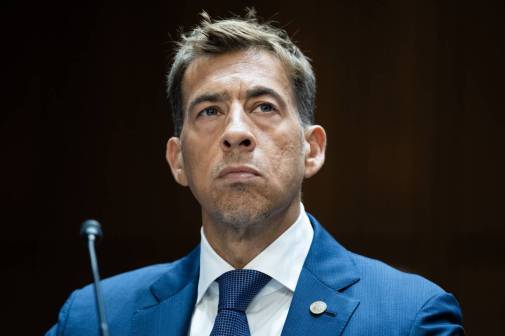South Dakota CIO says state needs $70M to replace financial system

During a presentation to the South Dakota legislature Thursday on the status of ongoing and upcoming IT projects, Chief Information Officer Jeff Clines said that it will cost $70 million to replace the Bureau of Finance Management’s critically outdated financial system.
This financial system, which processes transactions like payroll and contracts, is just one part of the state’s technology that needs modernizing, Clines said. Including the financial system, Clines said there are 638 applications — out of more than 1,200 total that the South Dakota Bureau of Information and Telecommunications supports — that are on a “brittle list,” meaning the technology is outdated or vulnerable to cyberattacks.
This means 51% of South Dakota’s state technology is considered outdated.
“A couple of years ago, we think it was in the 40% range,” Clines told lawmakers. “And it’s gone up. Yet, we’ve invested a lot of money into addressing these things and we have made amazing progress on different things. But, technology ages out very quickly nowadays and if you’re not constantly updating it and maintaining it, it becomes brittle fairly quickly.”
Clines told state lawmakers that his department arrived at the $70 million replacement cost for the financial system after conducting a feasibility study on upgrading the current system, which runs on a mainframe.
Clines said that while a lot of people love mainframes because they’re considered to be solid, it’s increasingly difficult to find staff with the expertise to run them.
“And the worry that I have is longer that we go on the mainframe, the harder it’s going to be to transition away from the technologies on the mainframe into modern system,” Clines said.
He added that this workforce challenge has made replacing the Bureau of Financial Management’s system critical. State Sen. Jim Bolin asked Clines during the presentation if the system would collapse if lawmakers decided to spend the $70 million elsewhere. Clines said yes.
“So talking into your point of the financial system, in the next five to six, seven years, I see a very real possibility of not having the skill set, the resources to be able to keep that system functioning to the expectations of the business — adding changes, making tweaks, you know, just supporting the day to day break fix operations of the system. And when that happens, it becomes increasingly difficult for BFM to do their job,” Clines said.
According to the feasibility study, Clines said, the $70 million estimate for the new financial system factors in 40 full-time equivalent employees and a four-year timeframe to find a vendor, issue contracts and implement the new software.
“When we talk about some of these modern technologies, I think it’s important to note the benefit that we get,” Clines told lawmakers. “So when we talk about the state financial system, there are an estimated 70-plus applications that would be replaced by a single state financial system.”
Clines said that when the state IT modernization is going to require a cultural change across state government and that a lot of its technology is custom built. By shifting toward an “off-the-shelf mentality,” he said, the state can become more efficient.
“One of the challenges we’ve seen at times is you know, people say, ‘Well, you’re trying to cheat and you’re trying to replace my job with technology,'” Clines told the legislature. “And for me, it’s not about replacing jobs or anything. It’s about allowing people to become more focused on service and less time on administrative work on the back end. Rather than pushing paper, I’d rather have people talking to the customers, helping people.”






